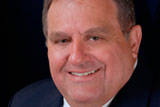Since last Veteran’s Day, Ken Burns’ in-depth documentary on the Vietnam War has aired. It is a powerful reminder of an unpopular war in which many “baby boomers” fought and died. It also prompts memories of the brutal treatment of American POWs and 1,350 who were listed as missing in action after the war ended. Some remain lost today.
Among the 571 American prisoners released in the winter of 1973 was U.S Army Maj. Ed Carlson, whose last assignment was senior Army advisor to the Washington National Guard.
Carlson, a 29-year veteran, was captured near the end of the war. He was held in a jungle camp along the Mekong River. He was a captive for 312 days. By comparison, Capt. Floyd Thompson, whose observation plane was shot down in March 1964, spent nine years as a POW, the longest in U.S. history.
Carlson grew up in San Lorenzo, CA, and was commissioned as an artillery officer upon graduation from San Jose State in 1963. He served two tours in Vietnam.
In early April 1972, Carlson was heading home after completing his second stint. He was an artillery adviser to the South Vietnamese army (ARVN). He drove 90 miles from Loc Ninh to Saigon and turned in his gear.
The only thing standing between him and his family back home was an optional appreciation dinner at Loc Ninh with his South Vietnamese counterparts. Out of loyalty, Carlson helicoptered back, but the dinner never happened.
Just after the Huey dropped him off, 20,000 North Vietnamese assaulted the base cutting off supplies and reinforcements. After a fierce two-day battle, direct air support from helicopter gunships and fighter jets was lifted despite the pilots’ objections.
The base was quickly seized and Carlson and four other Americans were captured, put in tiny wooden cages and moved deep into the jungle. Carlson was suffering from chest wounds.
During their initial interrogation, they believed they would be executed. North Vietnamese guards put AK-47s to their heads and ordered them to talk. They never did.
Carlson’s weight dropped from 185 to 135 lbs. from a meager rice diet of rice. There were no medications and his wounds were crudely treated. However, it was the discomforts of dysentery and the lack of sanitation which weakened his system and his will to live.
While not a frequent church-goer, Carlson had a deep faith which strengthened his determination to survive. He and the others started praying aloud, even though it was against camp rules and invoked punishment. Fortunately, Carlson’s captivity came at the end of the war after word reached home exposing the brutal torture at prison camps in North Vietnam.
On February 12, 1973, the first C-141 cargo planes took off from Hanoi packed with our POWs. At Clark Air Force Base in the Philippines we saw TV coverage of the prisoners walking, limping and being carried down the aircraft’s ramp.
After reuniting with his family, Carlson returned to active duty. He retired in Gig Harbor with his wife, Nancy. Col. Ed Carlson died from cancer in 1999 and now rests with other veterans in Tahoma National Cemetery, Kent.
Ed Carlson’s story is unique, but not unusual. Over the centuries, millions of our veterans have been seriously wounded, died or lost in war. They are men and women that we honor on Nov. 11.
Carlson was a fine soldier, family man and patriotic American. He served at a time when American flags were burned in our streets and those wearing military uniforms were excoriated.
Today, there is a new respect for our military men and women. They are America’s finest and we are thankful for them, their families and their service.
Don Brunell, retired as president of the Association of Washington Business, is a business analyst, writer, and columnist. He lives in Vancouver and can be contacted at TheBrunells@ msn.com.


